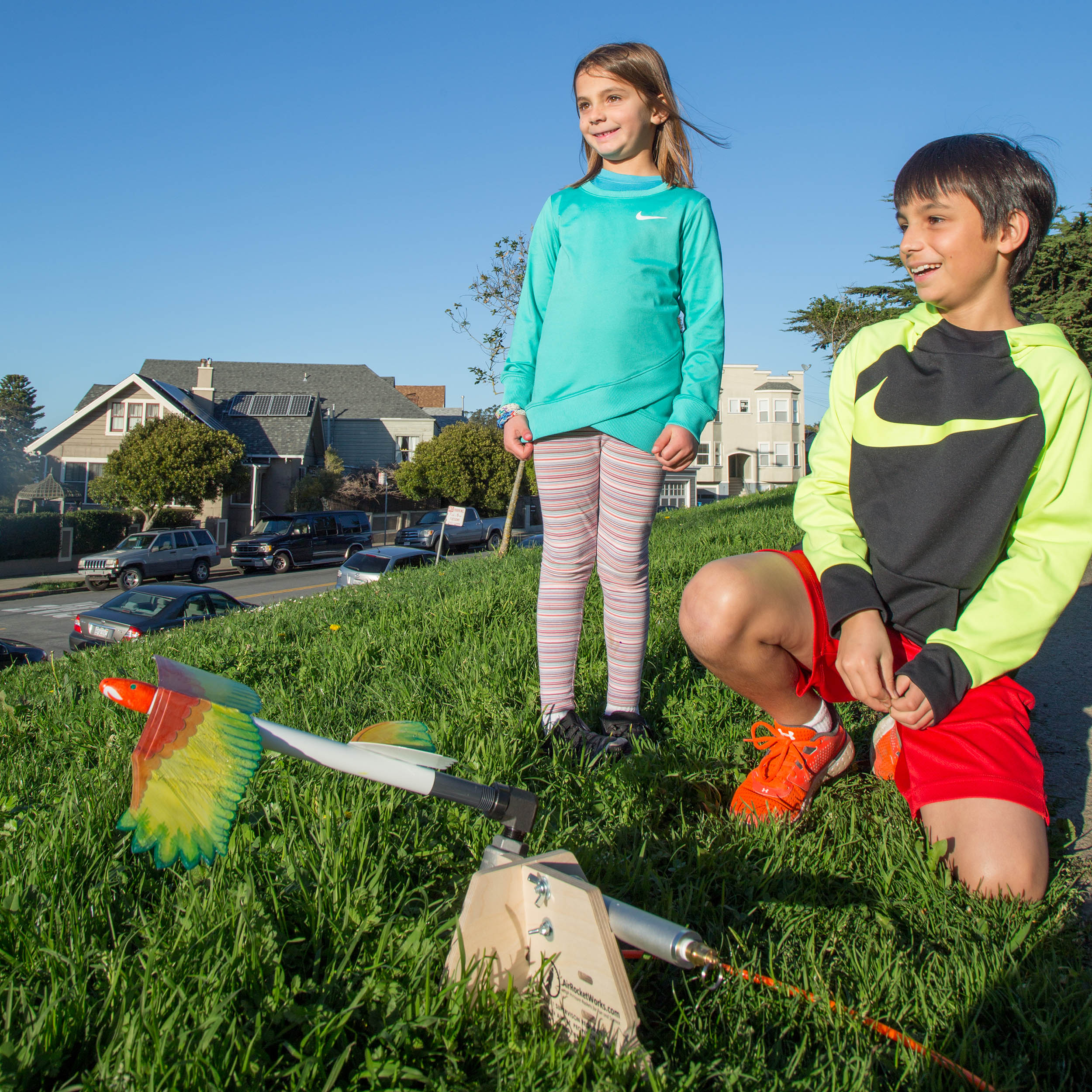
The Tech Studio in the Tech Museum of Innovation is a flexible interactive space intended to inspire the maker in everyone through design challenge learning.
In creating Just Wing It, our most recent studio project, I wanted to draw out the wonder that flight inspires in all of us.
In Just Wing It, guests can choose from a variety of components to design unique flying contraptions. In order to encourage creative design, the exhibit contains a wide library of biomimetic and whimsical wings. These wings are added to fuselages that were built off of Rick’s nylon Air Rocket Gliders.
For the testing rig, I took the Compressed Air Rocket Launcher and expanded it to create a two-person rig where guests can see their creations fly simultaneously. The modular glider design ensures that guests can quickly iterate after each launch to test multiple design ideas during the experience.
The best part of the Just Wing It has been seeing guests go from a less than successful design, to gliders that reach the ceiling. It’s not uncommon to hear cheering from that section of the museum floor!
-Katherine





